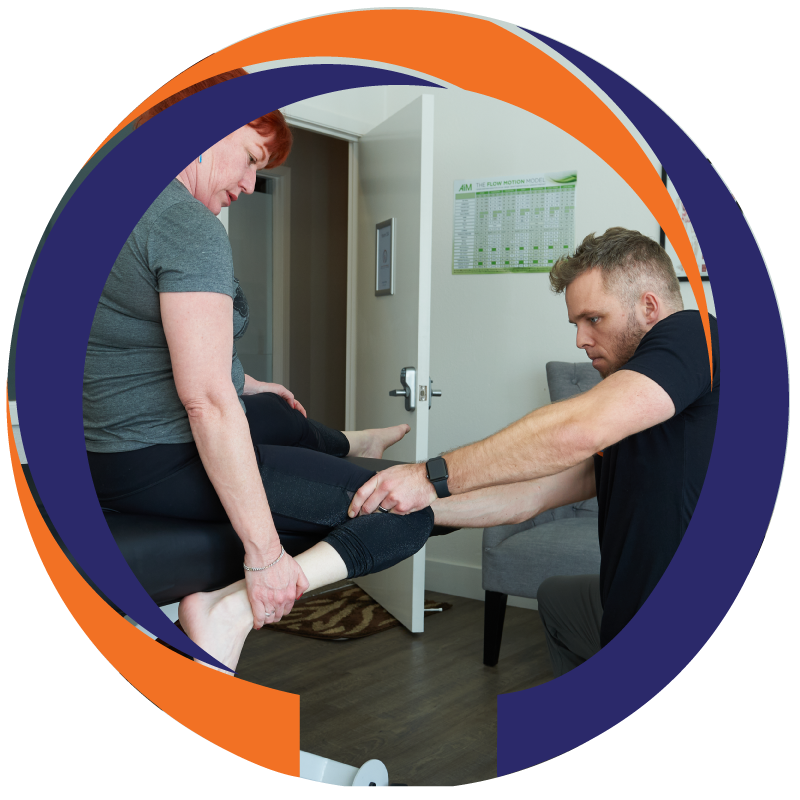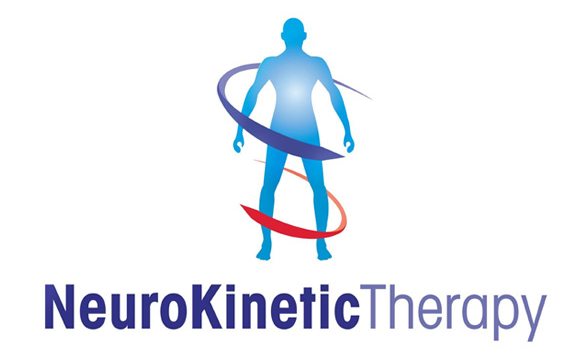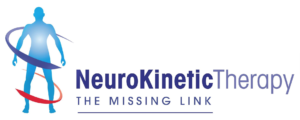NeuroKinetic Therapy™ (NKT)
Schedule a free phone consultation
NeuroKinetic Therapy™ | NKT™ | Kinetic Therapy
We all know that sports injuries sometimes don’t present themselves until it’s too late. We’ll sometimes push through these injuries. By doing this they can become worse over time. Our minds and bodies adapt to the reality post injury. We all believe that our bodies will heal over time, but they can cause more harm in the long run. When our bodies start to heal around an injury, which isn’t completely healed or has deteriorated over time, we can start to feel worse in other areas. David Weinstock, co-developed the Neurokinetic Therapy technique in the mid-1980s, and has used it to treat a variety of disorders.
What is NeuroKinetic Therapy™?
NeuroKinetic Therapy™ restores your body back to its proper easy and graceful movement and balance. With NeuroKinetic Therapy™, Dysfunctional movement patterns are found and eliminated, so that functional movement is resumed. This is accomplished by testing muscles to identify which muscles are compensating for other muscles. Once the compensation pattern is defined, then the Compensator muscle is released, and the Compensated muscle is retrained neurologically to work correctly throughout its range of motion repeatedly.

Neurokinetic Therapy | NKT | Kinetic Therapy at Pain and Performance Solutions

Neurokinetic Therapy | NKT | Kinetic Therapy at Pain and Performance Solutions
NeuroKinetic Therapy™ assesses coordination system dysfunctions resulting from traumatic injury, overuse, surgery, repetitive stress and positioning, intense training, postural misalignment, and more. It works by communicating with the Motor Control Center (MCC) in the Cerebellum portion of the brain. The MCC is responsible for proper body movement and dysfunctional movement. Movement is stored in the MCC as a pattern, not as specific muscle functions. That means that when muscles that are supposed to perform a movement are not available due to compensations or coordination system dysfunctions, other muscles (compensators) will be used to execute the task. This transference is a slippery slope that can lead to tightness, stiffness, pain, and even more dysfunction. Instead of addressing symptoms, NeuroKinetic Therapy™ addresses the cause of the pain. Which are dysfunctional movement patterns stored in the brain. This process allows Neurokinetic Therapy to yield fast and lasting results.
NeuroKinetic Therapy™ and Sports
Many professional sports teams are using NeuroKinetic Therapy™ to keep their athletes in top performance, prevent injuries, and heal injuries fast. Many baseball players turn to NeuroKinetic Therapy™ when they sustain a rotator cuff injury. For some of these pitchers, this type of therapy is used before surgery. It can help heal their injury without the need for surgery. If surgery is in order, these players will use NeuroKinetic Therapy™ during their rehabilitation process.
Athletes in all shapes, sizes and forms, are turning to NeuroKinetic Therapy™. There is little doubt that NeuroKinetic Therapy™ can increase an athlete’s performance, the risk of injury is lowered, and it will help in the recovery of an existing ailment. NeuroKinetic Therapy™ can give you the edge that may significantly increase your speed, endurance, focus, strength, balance, coordination, and accuracy when you need them most.
The Science behind NeuroKinetic Therapy™
An experiment was performed with an Electromyography (EMG). An EMG is an electrodiagnostic medicine technique for evaluating and recording the electrical activity produced by skeletal muscles. This EMG experiment measured the ability of different muscles in the upper arm and forearm to perform supination of the forearm.
In case you didn’t know, the biceps, is the most powerful muscle of the forearm. In this EMG experiment, the biceps were inhibited, and various muscles of the forearm were measured to see which one engaged to perform supination. In this case, the brachioradialis (a superficial, fusiform muscle on the lateral side of the forearm that attaches proximally on the lateral supracondylar ridge of the humerus and distally on the radius, close to its styloid process. Near the elbow, it forms the lateral limit of the cubital fossa, or elbow pit), supinated the strongest. What does this tell us? When a muscle is inhibited for whatever reason, the motor control center will find a substitute muscle to perform the function. If this pattern can remain in the motor control center, dysfunction and pain will follow. How then can we undo this dysfunctional pattern?
NeuroKinetic Therapy™ is an excellent modality in rehabilitation and manual therapy because it not only identifies the cause of pain and dysfunction, but also corrects it very quickly and quite painlessly. Also after an injury, the MCC adapts to a compensation pattern and holds that in its memory forever unless it is convinced to change. A good example is a whiplash accident in which the posterior neck muscles brace for the anterior neck muscles. This pattern can endure forever unless there is some intervention.
Supination
I talked about Supination and Supinator muscles earlier, so let me explain what they are and what they do. When you supinate your hand, the forearm and palm are being turned to face out, a thumbs-out position. This results in your thumb being at the far side away from your body and the pinkie finger closer to your body. If you were to do this when your arms are at your sides, the palms are facing forward, anteriorly. If you supinate your hand while your arms are over your head, the palm is facing backward.
When your foot is supinated, the sole is facing in, toward the ankle of the opposite foot. This is done with the ankle of that foot rolling out and the toes and sole facing in. If you were to look at the front of the leg when the foot is supinated, you would see the big toe angled in and the ankle angled out from the midline. It involves plantar flexion, adduction, and inversion of the foot.
David Weinstock, one of the principle founders of this manual therapy, describes NeuroKinetic Therapy™ as a “quick, cost effective treatment for permanent injury rehabilitation.” This therapy can bring you results quickly, but, you should keep in mind that rushing anything isn’t always the best. Go in with an open mind, if fast results are achieved than that’s wonderful. If not, don’t get down on yourself. Our bodies all work differently, so stay positive and stay motivated.
FAQ
Want to know more about your session? Check out our FAQ page and get answers to our most popular questions
Services
Our techniques include ART®, SFMA™, AiM, NKT, and P-DTR®. Visit our page to learn more about them.
About
Julian Corwin’s journey took him from Engineer to specialized body worker. Read more about how he applies his skills for you.